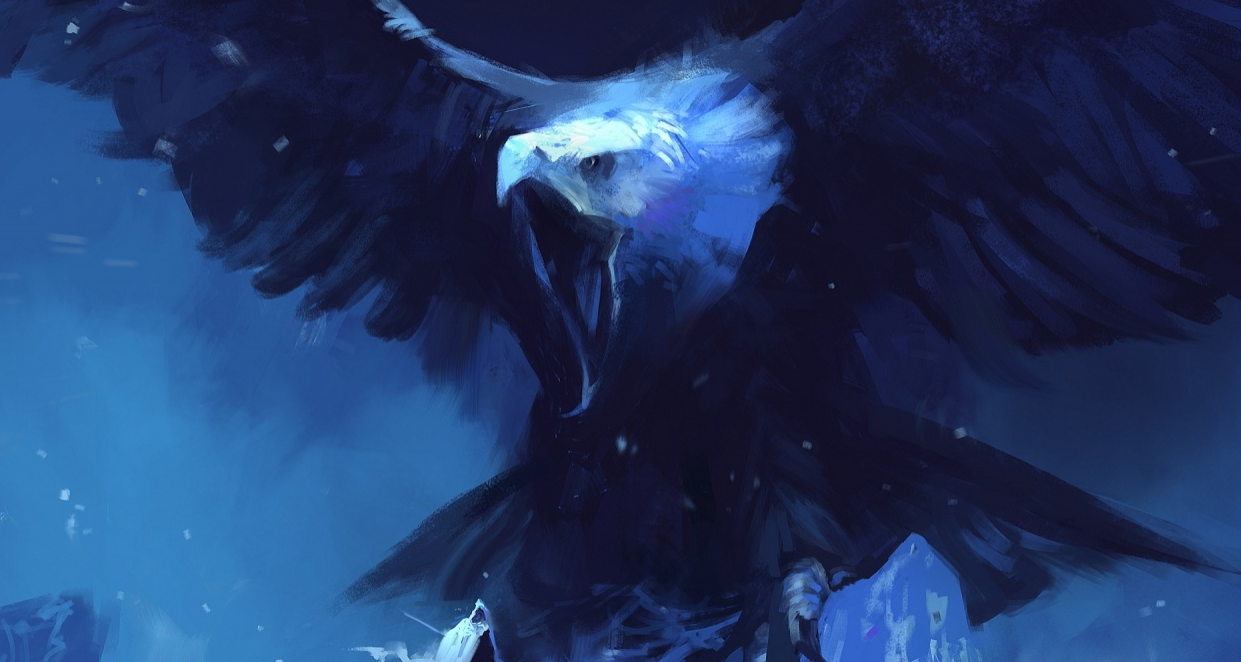
On the rolling prairie of western North Dakota, fields of wheat, barley and rye kiss a sky that is too often blue and dry, but there have always been ways to make it rain, and the first way came as a gift from Thunder Bird.
A gigantic eagle with a wingspan a mile wide and wings that shot lightning, Thunder Bird seemed invincible, and yet the bird had a problem. Each spring, a tremendous serpent uncoiled its body, reached up over the butte on the Missouri River where Thunder Bird nested and snatched her eggs. For many years this pillage continued, until one season, when two brave Shoshoni warriors hid near the nest and waited for the serpent.
The creature did not disappoint, and when the snake opened its mouth, revealing fearsome fangs and a flickering tongue, the braves did not waver, and shot their arrows into the beast’s neck. The serpent was dead, Thunder Bird’s eggs had been saved, and in return the braves received a present: the power to make rain. When the braves died, the power lived on in their skulls, which were severed from their bodies, wrapped in buffalo hide and kept in a bundle by the Waterbuster clan. By the mid-1800s Missouri River possessed the sacred bundle, when he died it passed to Small Ankle, but upon his death the bundle lay unclaimed. Small Ankle’s son, Wolf Chief, would have been the likely candidate, but the bundle terrified him.
When Wolf Chief was a teenager a great drought had plagued the land, and he watched his father sing and pray to the bundle of skulls. That afternoon black clouds gathered, plunging the prairie into darkness, and at night came the rains, saving the crops. But Wolf Chief also knew the bundle’s darker side, that it could summon not just rain, but fearsome god-like storms. On one occasion, foolhardy Indians mocked the bundle, smoke rose from the sack and a bolt of lightning swiftly struck the men dead. And so Wolf Chief ignored the bundle, did not dance or sing for it, let it sit untended in his mother’s earth lodge. Though doom followed this decision, and one by one, his children perished. “The old gods…never helped us,” Wolf Chief was recorded to have said, around the turn of the twentieth century. “And the people all died.”
Desperately, Wolf Chief tried to rid himself of the bundle’s burden, but found no takers. All members of the Waterbuster clan refused. The wife of Foolish Bear said she wouldn’t let the thing in her home, Hairy Coat advised to leave it in the earth lodge until the structure disintegrated around it, Wolf Chief wanted to bury it. But none of these solutions were deemed appropriate. Then one day in 1906 an anthropologist named Gilbert Wilson visited him, commissioned by a rich New York City man who wanted to put the treasure in a museum. Wolf Chief was reluctant at first, but eventually gave in, and sold the bundle for $100.
Apparently, the sacred skull shrine did go east to the museum, but not many years later it came back to what is now Fort Berthold Indian Reservation, in western North Dakota. Recently, while in North Dakota on a story about cloud modification, I visited the reservation. At the Three Affiliated Tribes Museum, just outside New Town, I asked the museum attendee if she knew where the skulls were.
“Honestly, I don’t know,” she said, “and my grandma is pretty high here and she doesn’t know.”
I was not convinced.









